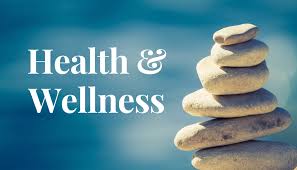Everyone desires to feel good in their body—strong, energized, and confident. That feeling is not exclusive to one age group. Whether you are just beginning in your teens, balancing responsibilities in your 30s and 40s, or luxuriating in your golden years, fitness is an integral component of your overall health and wellness.
A balanced, real-world approach to movement and diet keeps your body performing at its best throughout all phases of life. This is not about following trends or fixes. This is about creating a life based on sound principles of health and fitness.
Why Age Should Never Be a Barrier to Fitness
There is a prevailing opinion that fitness is for young people. That is as far from the truth as it can get. Every decade comes with its strengths and challenges, and that is precisely why your strategy for health and wellness should change—not cease to exist.
As you grow older, your aims can change from performance to longevity or from beauty to mobility. What remains consistent is the importance of remaining active and nourishing your body. Movement keeps the mind clear, increases circulation, alleviates stress, and gives you more energy. It is not about keeping up with others; it is about being present for yourself.
Teens and Young Adults: Laying the Groundwork
The sooner you begin developing positive habits, the more automatic they will become as you mature. For teens and young adults, this is the age to prioritize body awareness, proper movement patterns, and finding activities that you like. That might be playing a sport, weightlifting, running, or even dancing.
The objective is not perfection—it is consistency. This is the perfect time to begin associating movement with long-term health and wellness not just appearance.
Adults in Their 20s to 50s: Balancing Life and Fitness
This phase of life tends to be filled with more demands—work, family, and obligations that increase by the year. That is why one should create a system that is helping your goals without exhausting you.
Strength training has become part of your health and fitness plan in these years. Muscle not only holds up your joints and enhances metabolism, but it also acts as a defense against injury and decline due to age.
Cardiovascular conditioning is equally important. Brisk walking, cycling, or circuit training keeps your heart in good shape and supports all the other systems in your body.
And don’t forget mobility. Stretching, yoga, and active recovery sessions allow you to move well, alleviate pain, and recover quickly.
Your priority here is to create a sustainable rhythm. One which promotes your health and wellness without diminishing the other areas of your life.
60s and Beyond: Moving With Intention
Fitness in your older years is about staying independent, mobile, and confident in your body. You don’t have to do what you did in your 20s. Rather, the focus becomes being consistent with low-impact, joint-friendly motion.
Walking, resistance bands, light dumbbells, swimming, and body weight exercises are all great weapons for staying physically active. Balance and flexibility become the most important things. These will help avoid falls, promote good posture, and keep you on your feet.
This is also when many people feel the full effect of a lifetime of habits. The good news is that it is never too late to begin making lifestyle changes that are positive for your health and wellness.
Adapting Fitness to Your Stage of Life
What may be ideal for one life stage might not be ideal for another—and that’s alright. The trick is modifying your workouts, recovery, and nutrition to suit your needs at the time.
If you are younger, you may be more interested in performance and power. In middle age, recovery and stress management may be center stage. Further along in life, maintaining mobility and minimizing inflammation may be the priority.
That is the magic of a life based on fitness health and wellness you are not locked in. You change, shift, and evolve with your body.
Mindset Matters Just As Much as Movement
Your attitude towards fitness is as significant as the exercise itself. A healthy attitude is a component of any authentic health and wellness regimen. Pay attention to your body, push yourself when you are able, and rest when you need to. Progression is slow, but it will far outlast when created on intention and consistency.
Don’t compare yourself to other people. Your path is your own. Work on what makes you feel strong, supported, and energized.
The Bottom Line: It Is Never Too Early or Too Late
You don’t have to be a sports competitor to live a health- and wellness-focused life. You simply need to want to feel better, to move with intention, and to care for your body as if it’s the only one you’ll ever have—because it is.
Fitness is for all people. And when done with the proper attitude, it’s more than just working out. It’s a means to support your life, regardless of age.
Keep pushing on. Keep being present. Your body will reward you.






